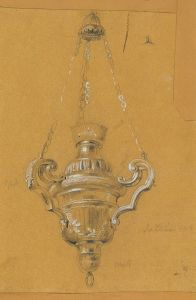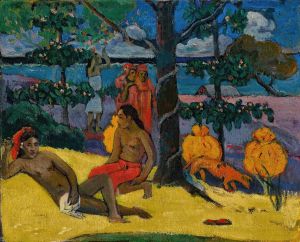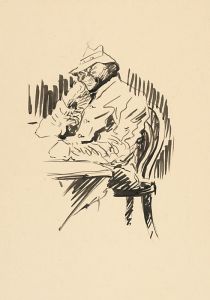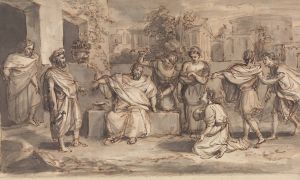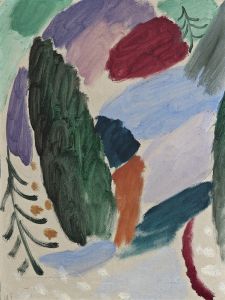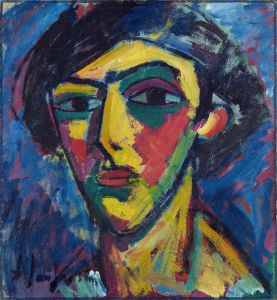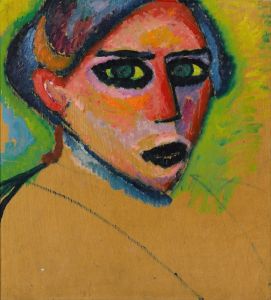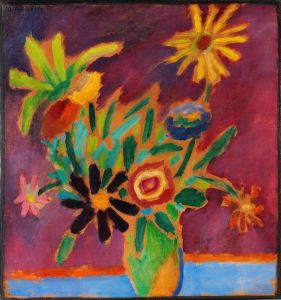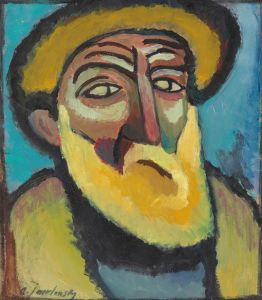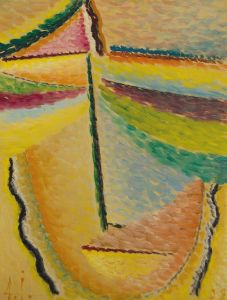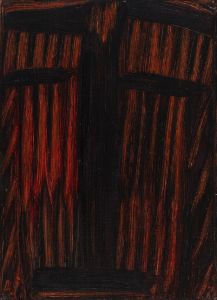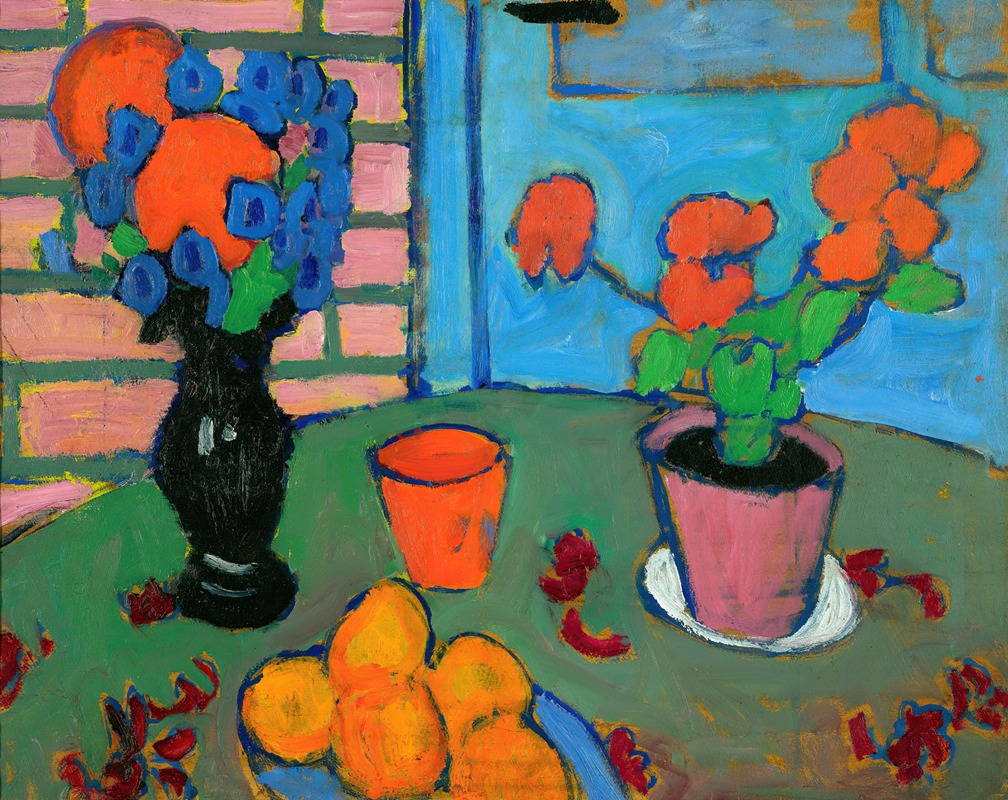
Still-Life With Flowers And Oranges
A hand-painted replica of Alexej von Jawlensky’s masterpiece Still-Life With Flowers And Oranges, meticulously crafted by professional artists to capture the true essence of the original. Each piece is created with museum-quality canvas and rare mineral pigments, carefully painted by experienced artists with delicate brushstrokes and rich, layered colors to perfectly recreate the texture of the original artwork. Unlike machine-printed reproductions, this hand-painted version brings the painting to life, infused with the artist’s emotions and skill in every stroke. Whether for personal collection or home decoration, it instantly elevates the artistic atmosphere of any space.
Alexej von Jawlensky was a Russian expressionist painter, known for his vivid use of color and bold compositions. He was a key figure in the development of expressionism in the early 20th century and was associated with several influential art movements, including Der Blaue Reiter and the Munich Secession. Jawlensky's work often focused on portraits and still lifes, where he explored the emotional and spiritual dimensions of his subjects through color and form.
"Still-Life With Flowers And Oranges" is one of Jawlensky's notable works, showcasing his distinctive style and approach to still life painting. Although specific details about this particular painting are limited, it can be understood within the broader context of Jawlensky's artistic development and thematic interests.
Jawlensky was born in Torzhok, Russia, in 1864 and later moved to Germany, where he became part of the vibrant art scene in Munich. His early work was influenced by the Post-Impressionists and Fauves, particularly the use of bold colors and expressive brushwork. Over time, Jawlensky developed a unique style characterized by a focus on the emotional and spiritual aspects of his subjects.
In "Still-Life With Flowers And Oranges," Jawlensky employs a rich palette and dynamic composition to convey a sense of vitality and energy. The painting likely features a carefully arranged composition of flowers and oranges, common subjects in still life painting, which Jawlensky uses to explore the interplay of color and form. His use of vibrant colors and bold outlines reflects his interest in the expressive potential of color, a hallmark of his work.
Jawlensky's still lifes, including "Still-Life With Flowers And Oranges," often go beyond mere representation to evoke a deeper emotional response. By focusing on the essential forms and colors of the objects, he invites viewers to engage with the painting on a more intuitive level. This approach aligns with the broader goals of the expressionist movement, which sought to convey the artist's inner experience and emotions rather than simply depict the external world.
Throughout his career, Jawlensky's work was shaped by his interactions with other artists and movements. He was closely associated with Wassily Kandinsky and other members of Der Blaue Reiter, a group that emphasized the spiritual and symbolic dimensions of art. This influence is evident in Jawlensky's use of color and form to convey a sense of inner reality.
In summary, "Still-Life With Flowers And Oranges" exemplifies Alexej von Jawlensky's approach to still life painting, characterized by vibrant colors, bold compositions, and an emphasis on emotional expression. While specific details about this painting are limited, it can be appreciated as part of Jawlensky's broader exploration of color and form, reflecting his contributions to the expressionist movement and his ongoing quest to capture the spiritual essence of his subjects.






